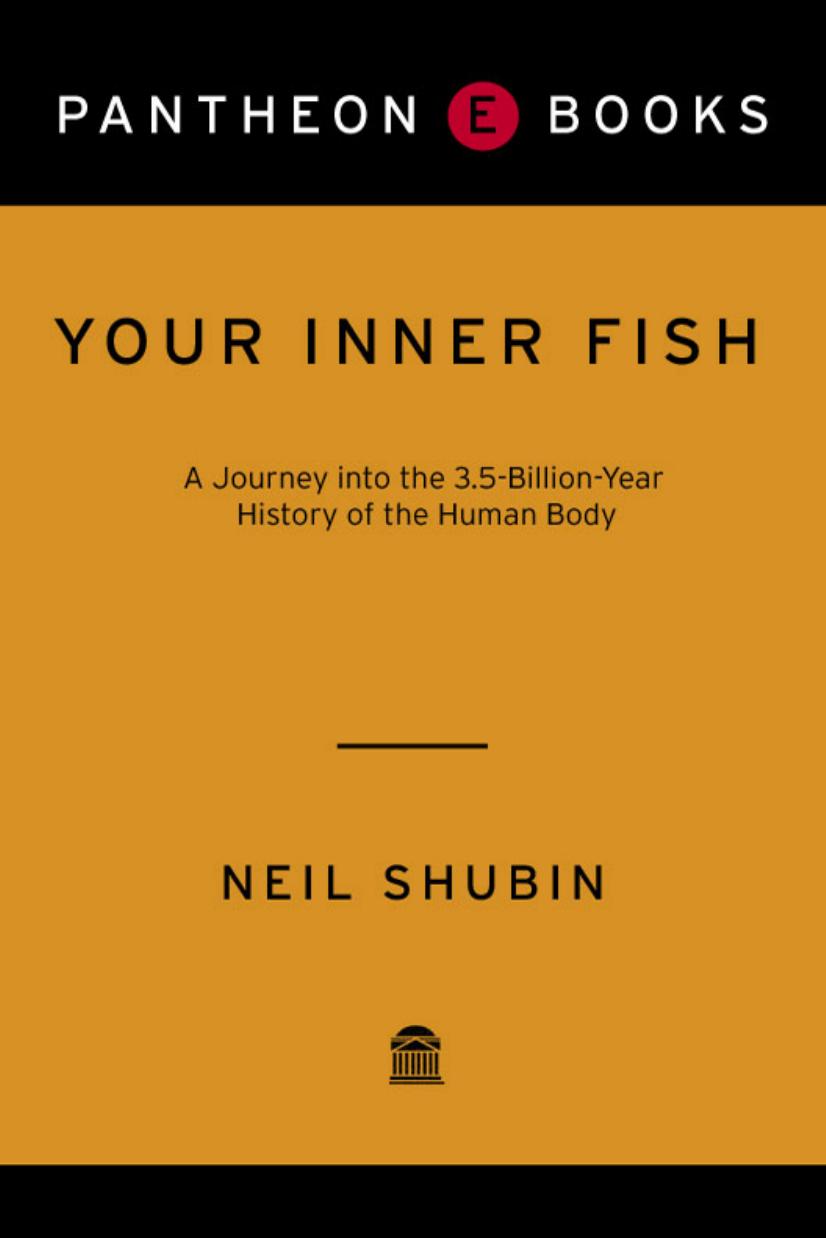Your Inner Fish by Neil Shubin

Author:Neil Shubin
Language: eng
Format: epub, mobi, pdf
Tags: History
ISBN: 9780307377166
Publisher: Knopf Doubleday Publishing Group
Published: 2008-01-15T05:00:00+00:00
Jellyfish relatives, such as sea anemones, have a front and a back as we do, a body plan set up by versions of the same genes.
Just what this hidden axis could be is not apparent from the outside of the animal. If we cut one in half, however, we find an important clue, another axis of symmetry. Called the directive axis, it seems to define two distinct sides of the creature, almost a left and a right. This obscure axis was known to anatomists back in the 1920s but remained a curiosity in the scientific literature. Martindale, Finnerty, and their team changed that.
All animals are the same but different. Like a cake recipe passed down from generation to generation—with enhancements to the cake in each—the recipe that builds our bodies has been passed down, and modified, for eons. We may not look much like sea anemones and jellyfish, but the recipe that builds us is a more intricate version of the one that builds them.
Powerful evidence for a common genetic recipe for animal bodies is found when we swap genes between species. What happens when you swap a body-building gene from an animal that has a complex body plan like ours with one from a sea anemone? Recall the gene Noggin, which in frogs, mice, and humans is turned on in places that will develop into back structures. Inject extra amounts of frog Noggin into a frog egg, and the frog will grow extra back structures, sometimes even a second head. In sea anemone embryos, a version of Noggin is also turned on at one end of the directive axis. Now, the million-dollar experiment: take the product of Noggin from a sea anemone and inject it into a frog embryo. The result: a frog with extra back structures, almost the same result as if the frog were injected with its own Noggin.
Now, though, as we go back in time, we are left with what looks like a huge gap. Everything in this chapter had a body. How do we compare ourselves with things that have no bodies at all—with single-celled microbes?
Download
Your Inner Fish by Neil Shubin.mobi
Your Inner Fish by Neil Shubin.pdf
This site does not store any files on its server. We only index and link to content provided by other sites. Please contact the content providers to delete copyright contents if any and email us, we'll remove relevant links or contents immediately.
Sapiens: A Brief History of Humankind by Yuval Noah Harari(14319)
Sapiens by Yuval Noah Harari(5322)
Pale Blue Dot by Carl Sagan(4953)
Homo Deus: A Brief History of Tomorrow by Yuval Noah Harari(4871)
Livewired by David Eagleman(3729)
Origin Story: A Big History of Everything by David Christian(3666)
Brief Answers to the Big Questions by Stephen Hawking(3393)
Inferior by Angela Saini(3293)
Origin Story by David Christian(3170)
Signature in the Cell: DNA and the Evidence for Intelligent Design by Stephen C. Meyer(3098)
The Gene: An Intimate History by Siddhartha Mukherjee(3074)
The Evolution of Beauty by Richard O. Prum(2963)
Aliens by Jim Al-Khalili(2803)
How The Mind Works by Steven Pinker(2777)
A Short History of Nearly Everything by Bryson Bill(2659)
Sex at Dawn: The Prehistoric Origins of Modern Sexuality by Ryan Christopher(2500)
From Bacteria to Bach and Back by Daniel C. Dennett(2462)
Endless Forms Most Beautiful by Sean B. Carroll(2442)
Who We Are and How We Got Here by David Reich(2417)
